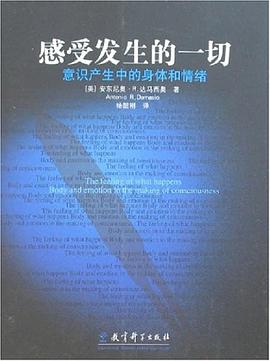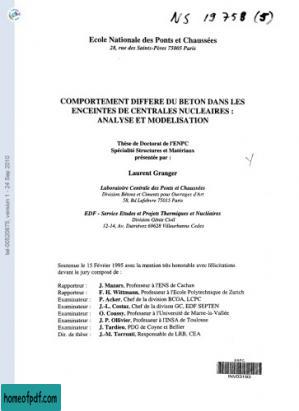COMPORTEMENT DIFFERE DU BETON DANS LES ENCEINTES DE CENTRALES NUCLEAIRES : ANALYSE ET MODELISATION 电子书下载
书名:COMPORTEMENT DIFFERE DU BETON DANS LES ENCEINTES DE CENTRALES NUCLEAIRES : ANALYSE ET MODELISATION
The containment of French nuclear power plant of the 1300 and 1400 MWe PWR type aremade of prestressed concrete and their delayed behaviour is systematically monitored by avery complete instrumentation. In an accidental phase, the tightness of the 1.2 m thickstructure, dimensioned to withstand an internal absolute pressure of 0.5 MPa depends mainlyon the residual prestress of concrete. But surveillance devices reveal substantial differencesfrom one site to another, from which the regulation calculation models cannot makesatisfactory allowance.For the purpose of improving the management of the population of power stations, EDF in1992 initiated a large study aimed at predicting the true creep behaviour of the containmentsalready built. This study, more material oriented, includes numerous shrinkage and creep testson reconstructed concrete in laboratory as well as on cement paste and aggregate. The mainresults are presented in part one.In the second part, we consider the different delayed strains of concrete one by one. A preciseanalysis of the physico-chemical phenomena at the origin of the delayed behaviours, leads usto propose a practical modelling of concrete in an overall equivalent continuous materialapproach. Secondly, the few parameters of the model are determined on the experimentalresults. In order to do so, two particular finite element programs in CESAR-LCPC have beendeveloped. The first one permits to take into account the non linear diffusion of humidity inconcrete as a function of temperature. The diffusion coefficient D(C) (C = water content) isfitted on the loss of weight tests as a function of time. The second step is a creep calculation ;7first, the program reads back the temperature and humidity results of the previouscomputations and then calculates the different delayed strains in time. For basic creep, wehave chosen a viscoelastic model function of temperature and humidity. The numericalscheme uses the principle of decomposition of the compliance function in Dirichlet series asproposed by Bazant. Thus, it is possible to calculate the shrinkage and creep functions, underconstant biaxial stress field (taking into account the initial prestressing of concrete), of onenuclear containment element modelled as a 1.2 m thick ring.The last phase consists in realising, knowing the creep and shrinkage behaviour of theparticular structure, a coupled calculation in order to account for the stress redistribution thattakes place between the prestressing cables and the concrete. Indeed, the delayed strains ofconcrete will cause the stress in concrete to drop slightly in time. In order to do so, we realisea non ageing calculation by using the Carson transformed.Finally, in the third part, we present the results of our simulations. We conclude by giving theprincipal theoretical and practical lessons of this study.
尊敬的读者:
欢迎您访问我们的网站。本站的初衷是为大家提供一个共享学习资料、交换知识的平台。每位用户都可以将文件上传至网盘并分享。
然而,随着用户上传的资料增多,我们发现部分不宜或版权问题的书籍被分享到了本站。
为此,我们已经关闭了分享入口,并进行了多次书籍审查,但仍有部分内容未能彻底审查到位。
在此,我们恳请广大读者与我们共同监督,如发现任何不宜内容,请 点击此处 进行举报,我们会第一时间处理并下架相关内容。
希望我们能共建一个文明社区!感谢您的理解与支持!
猜你喜欢
- 《高清一战全史(套装全3册)》特霍兰·汤普森中文珍藏版 电子书下载
- Security for Service Oriented Architectures - Walter Williams 电子书下载
- QoS Over Heterogeneous Networks - Mario Marchese 电子书下载
- 《读水浒:人性的十三种刻度》押沙龙 电子书下载
- 《自深深处》[英国]奥斯卡·王尔德文字版 电子书下载
- 《左宗棠的正面与背面:为官有术,做人有道》徐志频 电子书下载
- 《超滋润的爱情心理学》博锋 电子书下载
- 《旧时光的爱恋:遗落在岁月中的老情书》徐志摩珍藏版 电子书下载
- WebGL Up and Running - Tony Parisi 电子书下载
- 《黑暗中飘香的谎言》下村敦史 电子书下载
- 《通用财务思维:人人都成财务高手》毕一功经典版 电子书下载
- 《穷人通胀,富人通缩》牛刀 电子书下载












